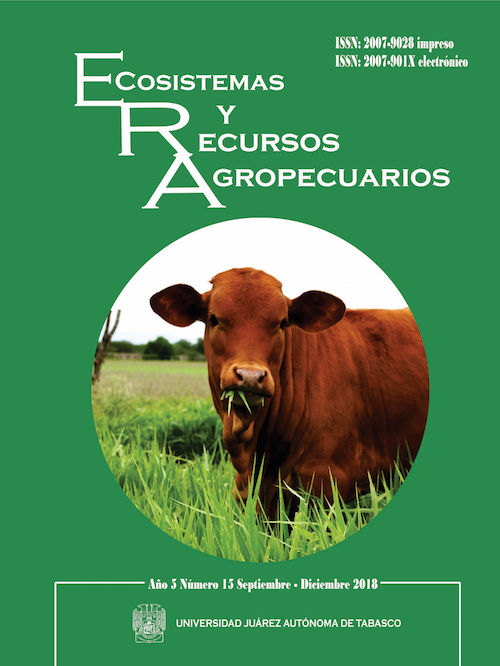OYSTER PRODUCTION AND MEAT YIELD IN Crassostrea spp (BIVALVIA: OSTREIDAE) IN PINAR DEL RIO, CUBA
DOI:
https://doi.org/10.19136/era.a5n15.1241Keywords:
oyster production, meat yield, Pinar del Rio, CubaAbstract
The main fishing enterprise located in the province of Pinar del Río, Cuba, markets oyster meat packed in brine bags of 460 g. The oysters come from natural bank fisheries (mangrove and bottom oyster), and from farms (mangrove oyster). Although the capture during 2009 – 2013 showed an increasing trend (50 to > 80 t), the oyster meat yields recorded values below (3.3 – 3.9 %), the acceptable minimums (4.9 %); in addition, a decrease in meat weight was observed between the packaging and commercialization, impacting productivity. The objectives of the study were the assessment of oyster exploitation based on the meat yield, and to assess the meat loss in the final packed product. A monthly and annual yield variation analysis and their relationship between fishery type and oyster size was performed. Meanwhile, the loss of meat was analyzed by different treatments of oyster / brine proportions. Significant differences (p < 0.05) of meat yield (%) by oyster species and size with a better performance in the farmed oysters were observed. The traditional proportion of packing for commercialization (meat / brine, 391 g / 69 g = 460 g), influenced the weight-loss of meat by leakage of interstitial fluid. After the treatments with different proportions of meat / brine, the proportion 1:1 showed the least loss of meat weight. The breach of commercial size and the lack of cleanliness of the oysters before the shell removing process, impacted the meat yield analysis during 2009-2013Downloads
Downloads
Published
Issue
Section
License
Aviso de copyright
Los autores que se envían a esta revista aceptan los siguientes términos:
una. Los autores conservan los derechos de autor y garantizan a la revista el derecho a ser la primera publicación del trabajo con una licencia de atribución de Creative Commons que permite a otros compartir el trabajo con un reconocimiento de la autoría del trabajo y la publicación inicial en esta revista.
B. Los autores pueden establecer acuerdos complementarios separados para la distribución no exclusiva de la versión del trabajo publicado en la revista (por ejemplo, en un repositorio institucional o publicarlo en un libro), con un reconocimiento de su publicación inicial en esta revista.
C. Se permite y se anima a los autores a difundir su trabajo electrónicamente (por ejemplo, en repositorios institucionales o en su propio sitio web) antes y durante el proceso de envío, ya que puede conducir a intercambios productivos, así como a una cita más temprana y más extensa del trabajo publicado. (Consulte El efecto del acceso abierto).


